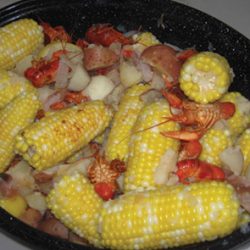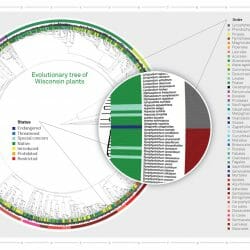Lake Invaders
“It would be hard to design a better invasive species delivery system than the Great Lakes overseas freighter,” journalist Dan Egan writes in The Death and Life of the Great Lakes — this year’s selection for Go Big Read, UW–Madison’s common reading program. Egan’s page-turning narrative details how zebra and quagga mussels native to the Caspian Sea came to wreak environmental havoc: disrupting the aquatic food chain, fueling deadly algae blooms, and clogging intake pipes. Their “front door” to the Great Lakes is the St. Lawrence Seaway, which, beginning in 1959, gave ships from around the world access to 8,000 miles of U.S. and Canadian interior coastline. As freighters travel along the system of locks, they take on cargo and empty ballast tanks of water picked up in foreign ports — releasing small plants and animals from the ocean along with it. Invasive species have also sneaked out the “back door” of the Great Lakes, by way of the Chicago canal linked to the Mississippi River basin. Quagga mussels, called “the STD of the sea,” have found their way west to Lake Mead, the largest reservoir in the United States.
Published in the Fall 2018 issue




Comments
No comments posted yet.